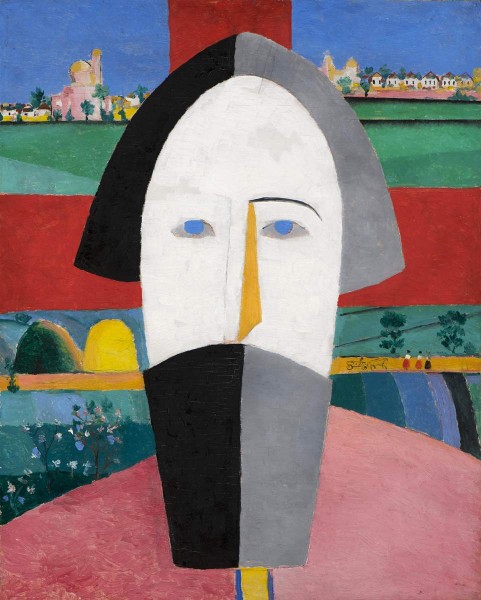Kazimir Malevich’s Head of a Peasant can be regarded as a prophetic image. It also contains the key to the understanding of the artist’s entire Peasant Cycle. Malevich paints Head of a Peasant in the same way as an icon-painter paints an icon, with the real life sensations acting as a source enriching ageold tradition. The sullen peasant depicted on the canvas recalls the early Orthodox icon The Life of St Nicholas, a Russian form of the image of Christ Furious Eye, and the characters of traditional Russian wood engravings (lubok). The background for the peasant’s icon-like face is a scene of harvesting, which accompanies many of the works of Malevich’s Peasant Cycle. Russian Museum: From Icons to the Modern Times. Palace Editions, St Petersburg, 2015. P. 343.
Confirming his new artistic beliefs, Kazimir Malevich derived a great deal of inspiration from the spiritual culture of the Russian peasantry. The concepts and imagery of his works were heavily influenced by the traditions of Russian icon-painting. The format of this canvas and the composition recall an hagiographic icon. The solemn and austere countenance on the red cross is a mystical vision of the artist’s own future tragedy and a symbol of the fate of the Russian peasantry — virtually destroyed by the end of the 1920s. The background of the picture is divided into two parts, recalling hagiographic scenes. The landscapes are painted in different artistic styles, ranging from Impressionism to Cubo-Futurism and Suprematism, symbolising the steps of the artist’s ascent or Malevich’s Suprematist red cross.

